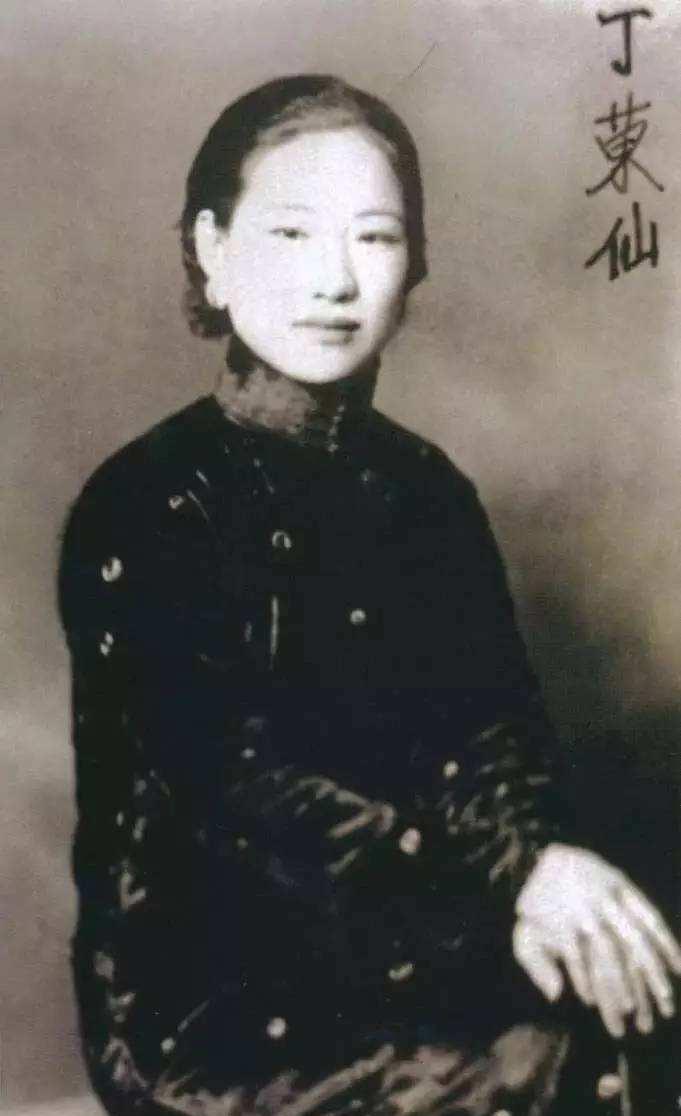Ding Guoxian, the grandmaster of the Jin opera generation, created the art of the Ding school to bring the singing art of Jin opera to the peak, and she was a susheng king who had been praised in the Three Jins and even In Beijing, Tianjin, Hebei, Shaanxi and Shanghai. Ding Guoxian has cultivated a large number of rising stars such as Liu Baojun, and most of them have become outstanding representatives of today's Jin opera industry.
Ding Guoxian, formerly known as Ding Buyun, stage name "Guozihong", was born in 1909 in the countryside of Wangkou Town, Shulu County, Hebei Province, and learned art at the age of 7. He first learned Qingyi, and then changed to Xusheng, breaking the precedent of women dressing up as men on the stage of Jin opera.
She officially performed on stage at the age of 13, and became famous at the age of 17, becoming a famous singer.

Ding Guoxian's singing voice is round and bold, but does not have a female female tone, and the performance is free and realistic, but it does not have a female appearance.
In the mid-1920s, Shanghai EMI Company produced records for her, so she won the reputation of "Shanxi ZiShusheng King".
Ding Guoxian's Jin opera Xusheng "Ding Pai" singing voice and representative works "Hitting the Golden Branch", "Empty City Plan", "Butterfly Cup", "Catching and Releasing Cao", "Taibai Drunkenness", "Blood and Tears Vengeance" and other plays created by Ding Guoxian have had a profound impact on Jin opera and promoted the development of Jin opera art.
After 1949, she successively served as the head of the Taiyuan Jin Opera Troupe, the vice president of the Shanxi Jin Theater, the principal of the Taiyuan Opera School, and the principal of the Shanxi Provincial Opera School. She is a member of the Standing Committee of the 1st, 2nd and 3rd CPPCC National Committee of Shanxi Province, and a deputy to the 1st and 2nd People's Congress of Shanxi Province.
In September 1952, Ding Guoxian participated in the country's first opera observation performance, and her performance of "Hitting the Golden Branch" sensationalized Beijing, and she won the first prize for performance. "Hitting the Golden Branch" has also become a pearl in the crown of Jin opera art.
Premier Zhou personally presented her with certificates and prizes, and Premier Zhou said: "Comrade Ding Guoxian, your Tang Dynasty Sect has been very successful in his performance, and there is a chance that Chairman Mao will still have to watch it!" ”
Soon, Ding Guoxian received a notice to go to The Huairen Hall in Zhongnanhai with the troupe to perform "Hitting the Golden Branch" for Chairman Mao and the head of the Central Committee.
After the performance, Chairman Mao shook Ding Guoxian's hand and said, "You played Emperor Tang Dynasty very realistically. In 1955, she starred in "Hitting the Golden Branch" and was made into a movie.
In 1965, Premier Zhou presided over a symposium in Beijing on the introduction of the old and the new opera, and asked Ding Guoxian to participate by name. The Prime Minister said: "Listen to the opinions of all sides. ”
After the "Cultural Revolution", Ding Guoxian was beaten into the "cow ghost snake god".
In 1962, Liu Baojun was adopted as a disciple by Ding Guoxian. With the help of Ding Guoxian's guidance, she became a famous Jin opera Xusheng actor.
Liu Baojun once left the troupe to become a worker, and Ding Guoxian often reached out to help, and also gave Liu Baojun the good clothes he wore to wear. Liu Baojun's husband once said: "Teacher Ding and his wife are our reborn parents, and we must not forget their kindness for the rest of our lives..."
In the summer of 1971, Ding Guoxian fell ill and was hospitalized after being criticized. After Liu Baojun learned the news, he made dumplings and sent them to the teacher.
When the tribulation was afflicted, the master and disciple met, and there was a pang of sadness. When parting, Ding Guoxian, who was lying on the bed, shook his hand and asked Liu Baojun to leave quickly to avoid accidents.
In the early morning of February 16, 1972 (the second day of the first lunar month), 63-year-old Ding Guoxian died in the hospital. Liu Baojun, who endured grief, let his son find a flatbed truck, called several people, and pulled the teacher's body back together.
Liu Baojun and several sisters and sisters dressed the master cleanly. Ding Guoxian was buried in her husband's hometown in Xinzhou.
After smashing the "Gang of Four," the party and the government completely rehabilitated Ding Guoxian.
On January 14, 1981, the relevant ministries held a solemn burial ceremony for Ding Guoxian at the Martyrs' Cemetery of the Twin Pagoda Temple in Taiyuan.
In 2006, the Ding Guoxian cemetery expired, and his ashes were reburied, and people from the literary and art circles in the provincial city, drama colleagues and opera lovers participated in this activity.
The base of Ding Guoxian's tombstone is 3.3 meters square black marble, the stele is 1.9 meters high Han white jade, and the front is inlaid with the remains of Ding Guoxian.